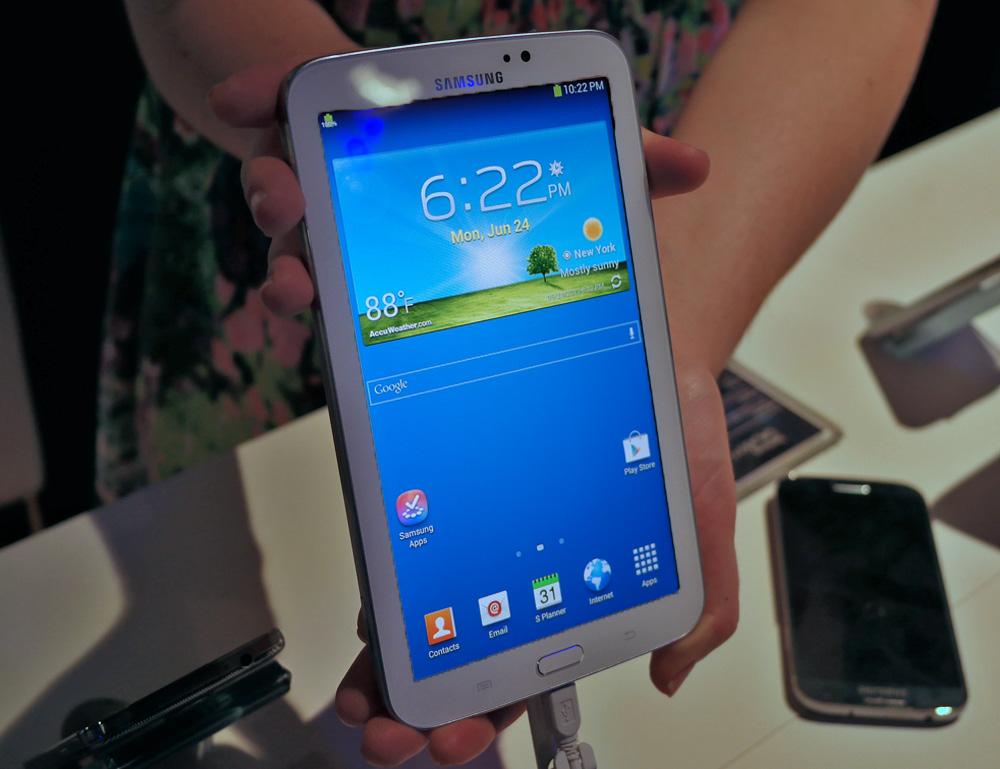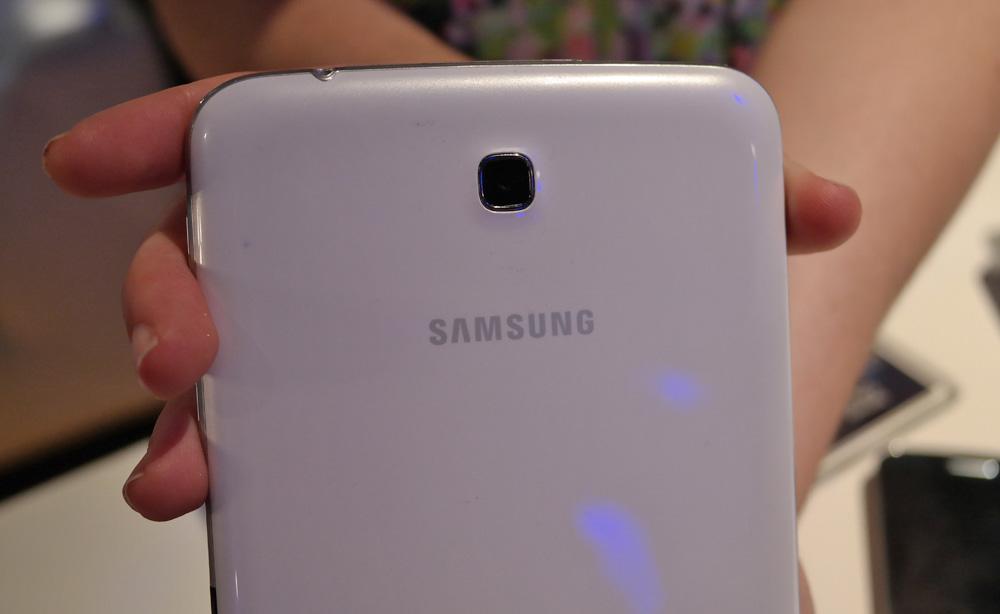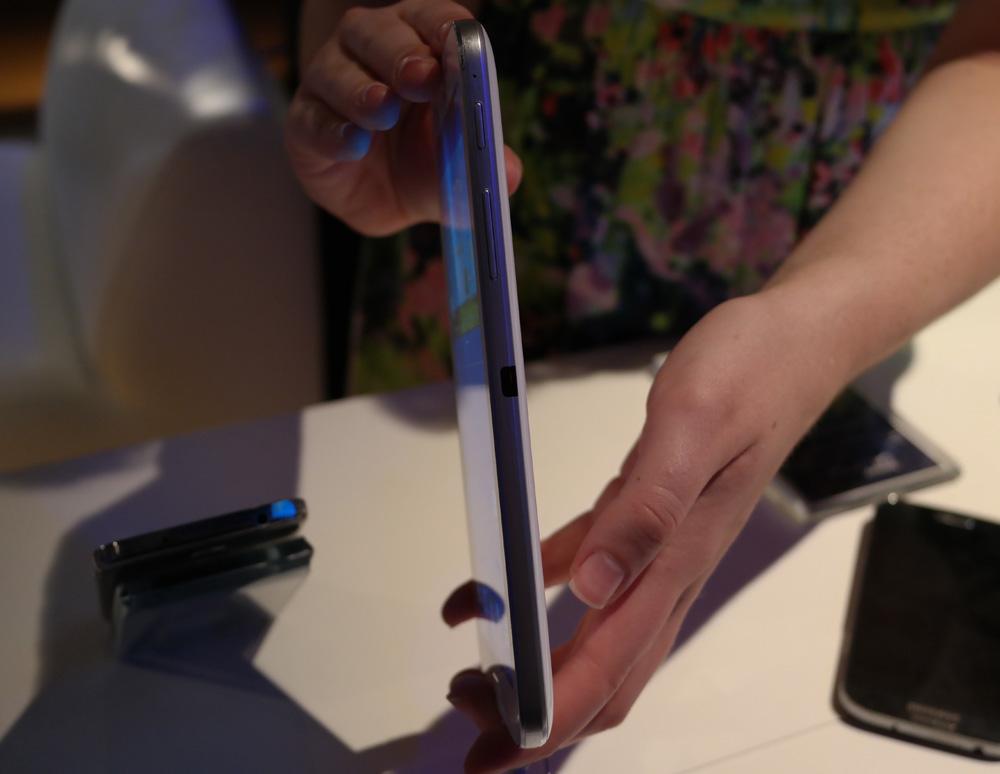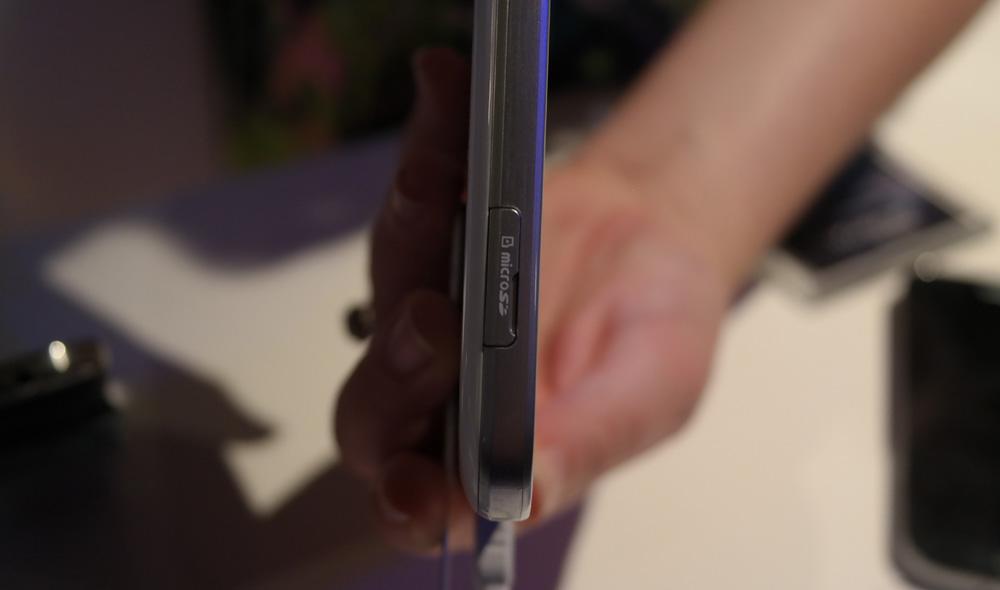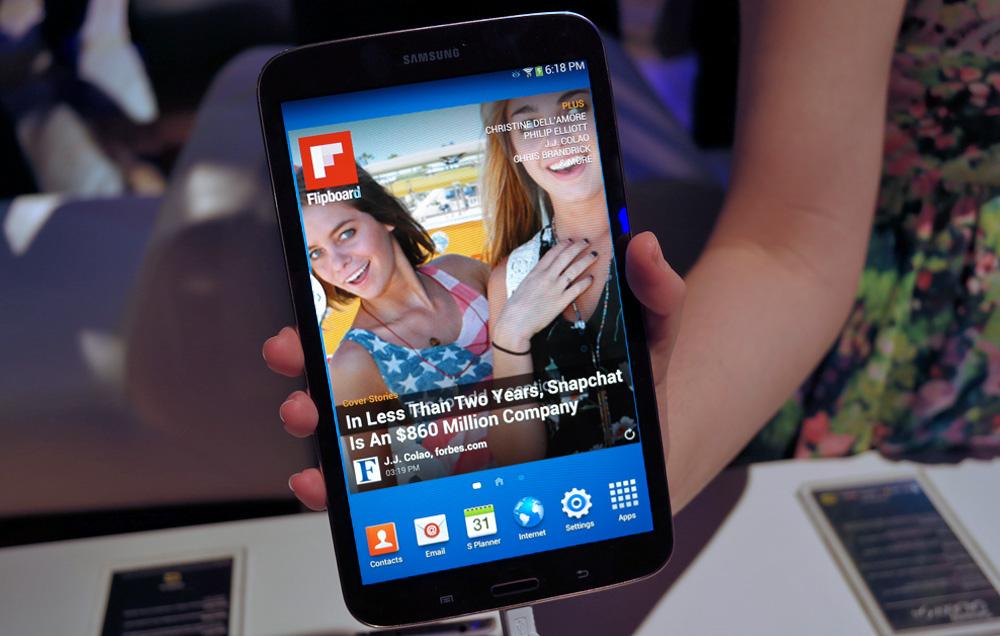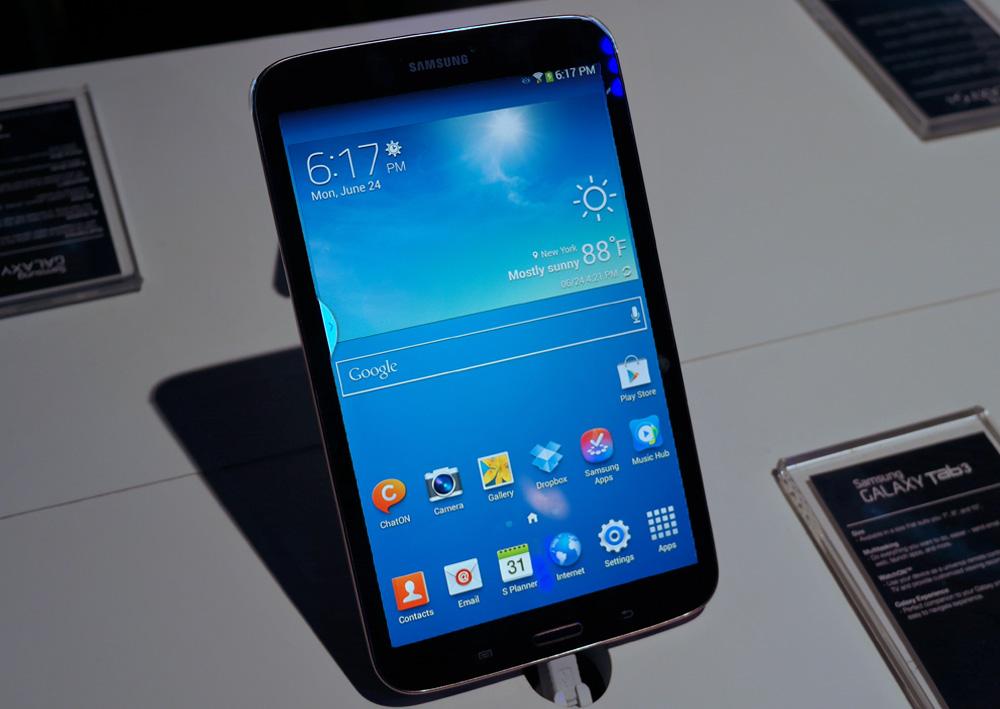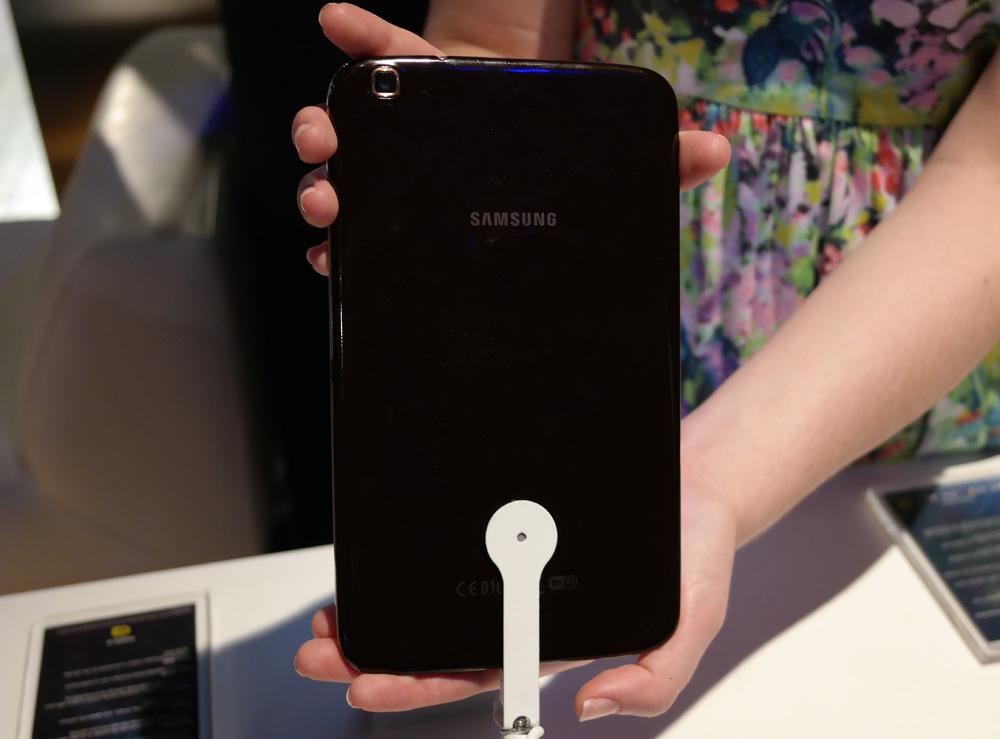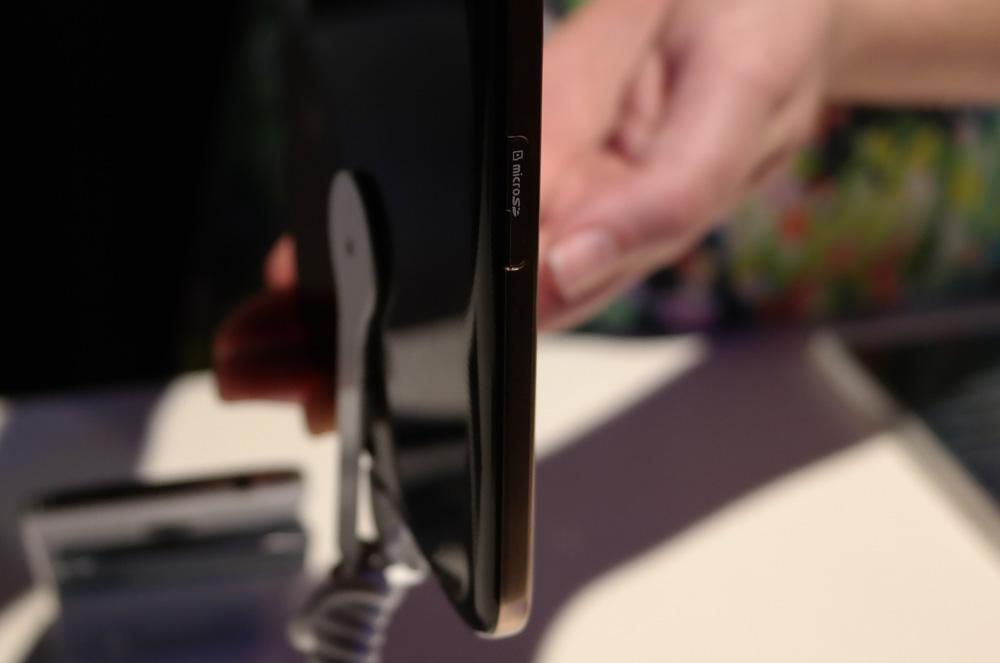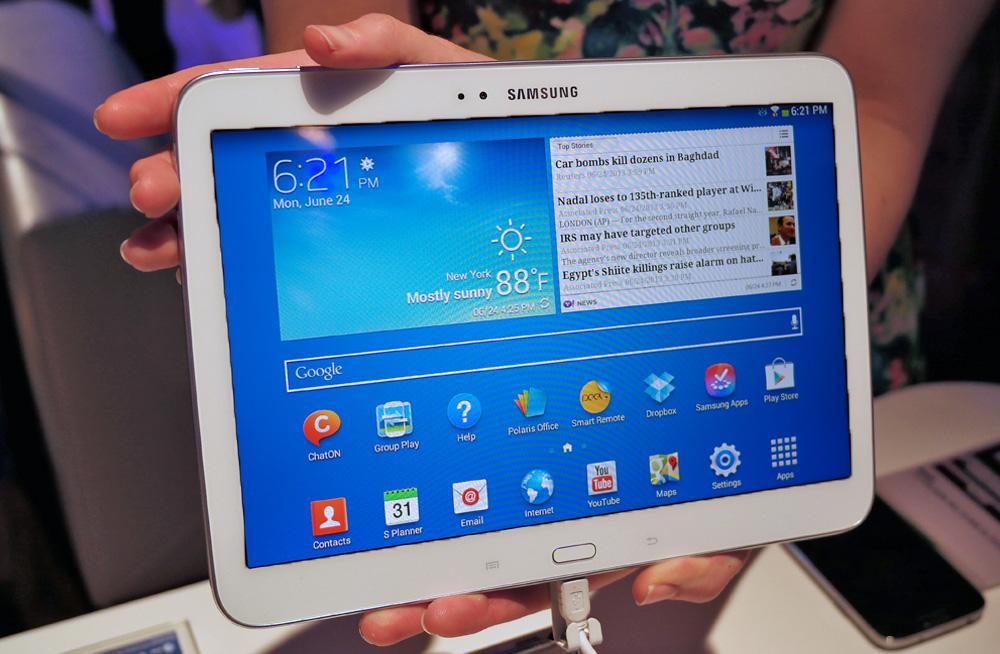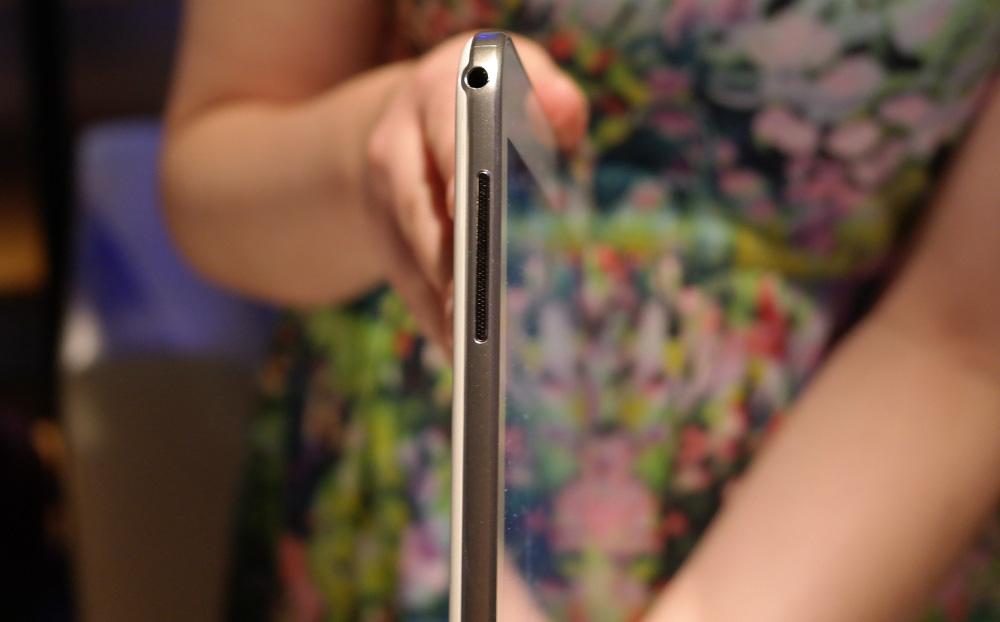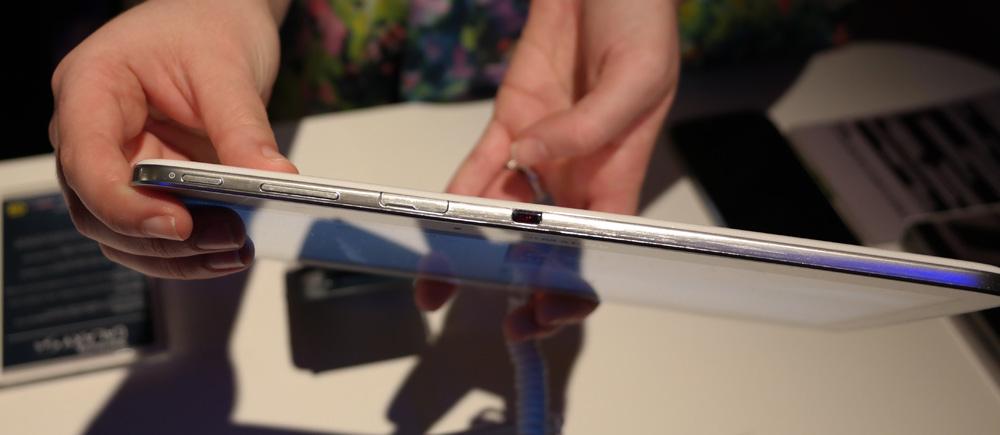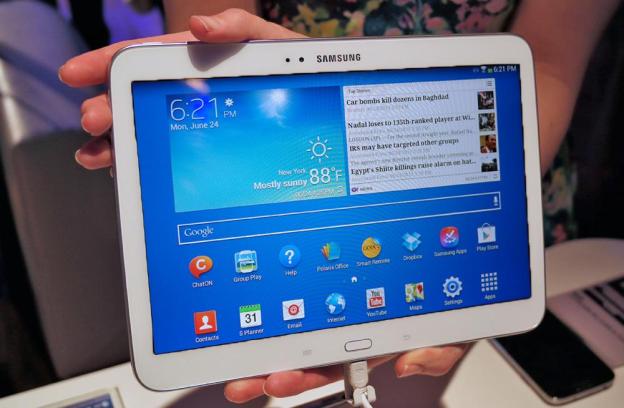
On July 7, the next generation of Samsung’s venerable Galaxy Tab line will go on sale. The Galaxy Tab 7.0, Galaxy Tab 8.0, and Galaxy Tab 10.1 are the company’s mid-level tablets featuring low prices and decent specs. We got a chance to play around with them ahead of launch, and so far these Android tablets look pretty slick.
All three tablets share the same overall design language as the Galaxy Note 8.0. There are no front-facing speakers like the last generation, even on the 10.1-inch model. And though they all run Android Jelly Bean, each has a physical home buttons flanked by capacitive Back and Menu buttons. That’s the same setup you’ll find on the current Galaxy S phones, so it looks like Samsung is going for a universal design concept. There’s nothing wrong with this – a hardware button is very useful, especially when Android goes wonky – we’re just not sure how useful it will be on the Tab 3 10.1 since it’s in the middle of one of the long sides. On the Tab 3 7.0 and 8.0 most will be able to reach it comfortably with their thumbs.

The smallest Tab 3, the 7-inch one, actually looks a little too small in comparison with the 8-inch version. 7 inches is the established “small” size for Android tablets, so it shouldn’t seem odd for it to be in this group. However, the 8-inch one is just bigger enough to offer more screen real estate without feeling too big in the hand.
There are other reasons to pick the 8-incher over the 7.0. The larger Tab 3 gets Android 4.2 instead of 4.1, 1280 x 800 resolution, twice as much (16GB) internal storage, and 1.5GB of RAM. The Tab 3 8.0 will also ship with some of the software found on the Galaxy S4, like on-board translation and multi-window support. What we like best about the Tab 3 8.0 is how holdable it is. It’s narrower than the Galaxy Note 8.0 because it doesn’t need extra room for the S-Pen. But in every other way, including lightness, comfortable curves, and screen brightness, it feels the same.

All three Tab 3s will come in white and a golden brown color that’s very pretty.
In our short hands-on time with the devices we experienced smooth performance when opening apps and swiping around the interface. All of the Tab 3s have dual-core processors inside, so they’ll work just fine with the majority of Android apps. The Tab 3 8.0 has the most RAM, 1.5GB and probably the best screen size to resolution ratio. The Tab 3 10.1 has the same 1280 x 800 pixel resolution. The pixel density difference is apparent when looking at them side by side. Overall, it’s not a problem for the Tab 3 10.1, it just makes the 8.0 look like the best value of the bunch.
Having played with all three, the Galaxy Tab 3 8.0 comes out as the star. It’s light and compact and very portable plus speedy and good-looking. The $300 price puts it above most 7-inch tablets and below the iPad Mini. The $200 Galaxy Tab 3 7.0 isn’t shabby, though. It will likely hold up well against others in this category, including the Nexus 7. The Tab 3 10.1 has a lot of competition in the 9 – 10-inch market, and the $400 asking price might not be enough to get it to stand out. We’re looking forward to getting all of these in soon and putting them through a more thorough review. If you can’t wait, all three are up for pre-order now and will go on sale on July 7.
